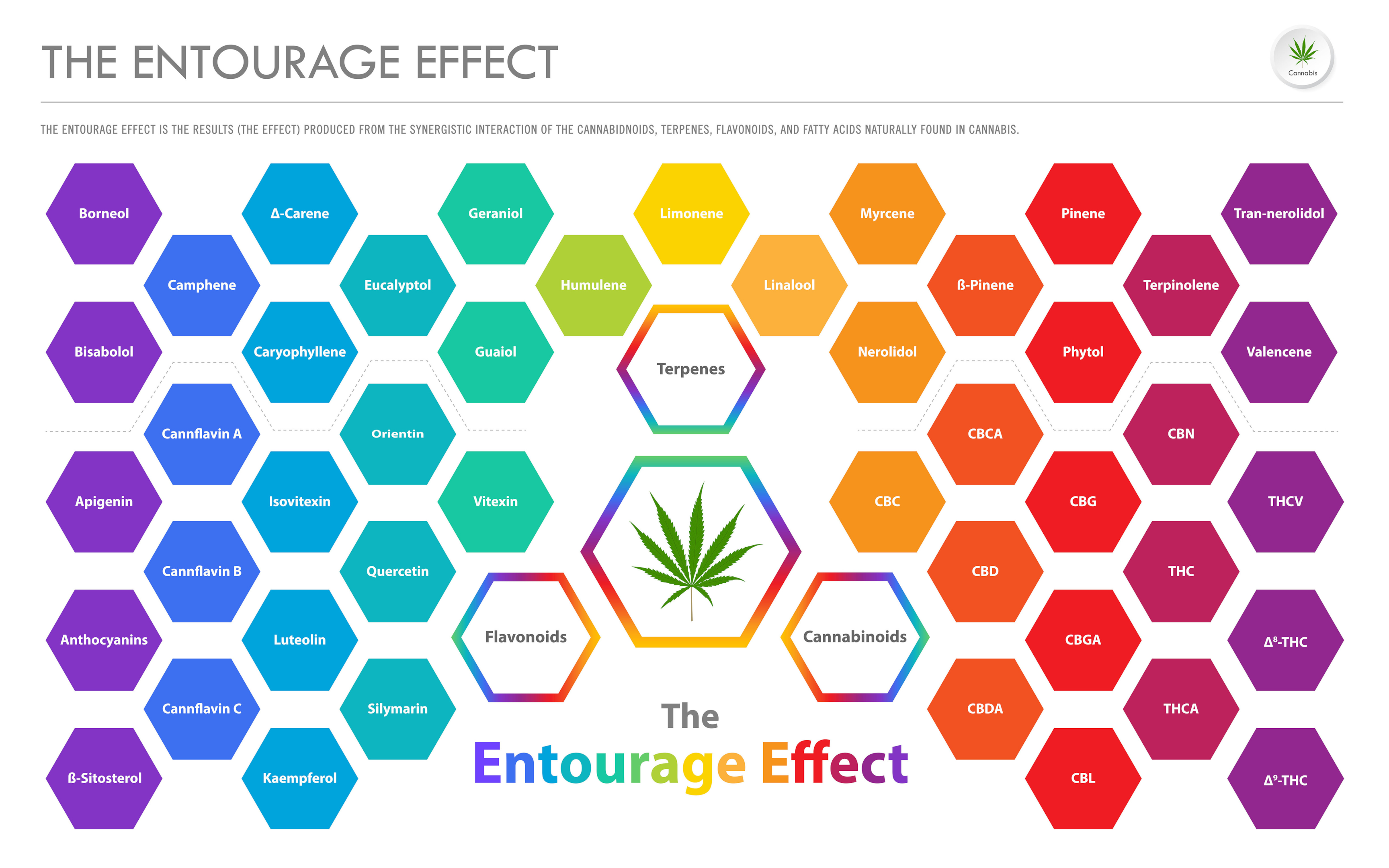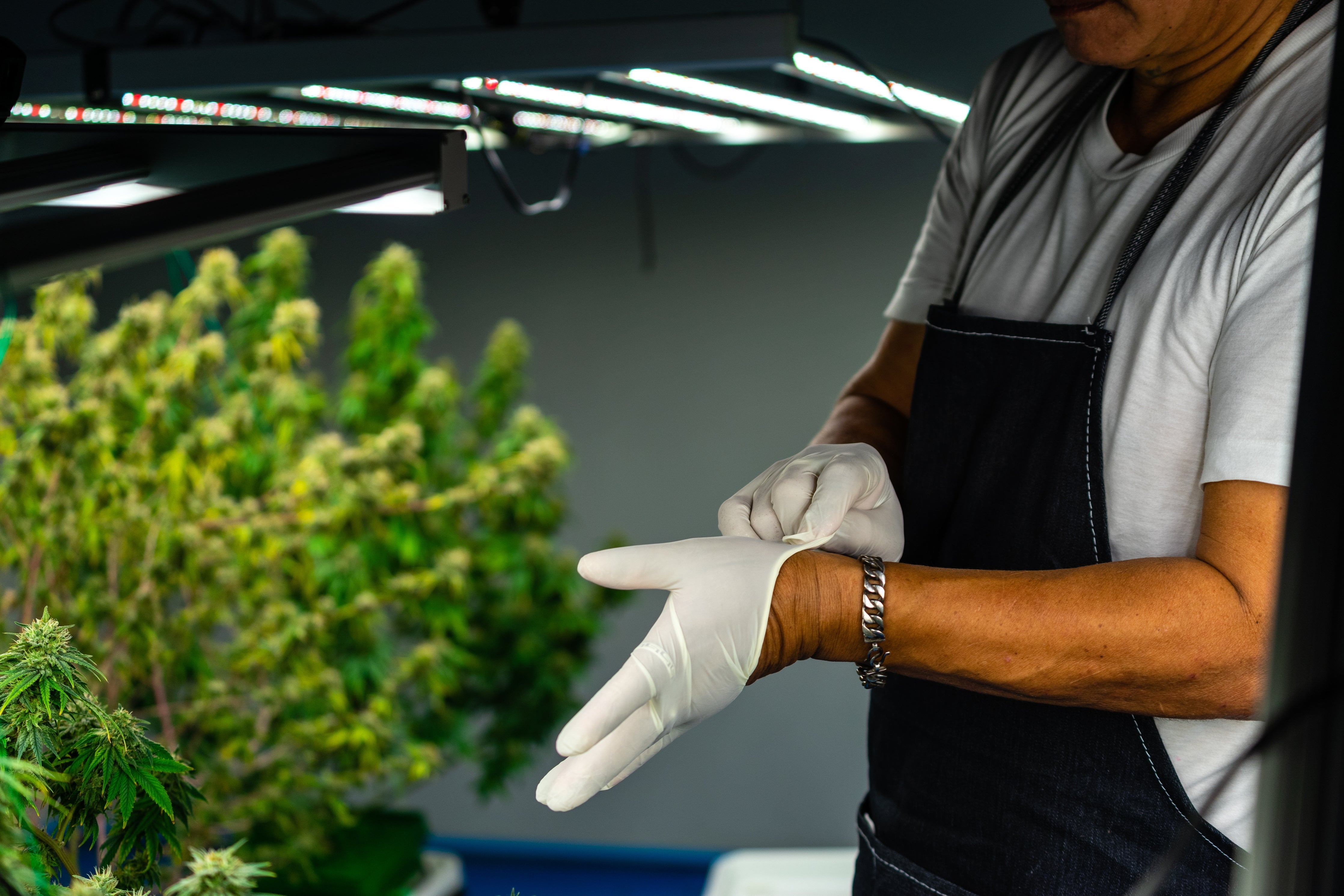Cannabis cultivation is an art as much as it is a science. From the first germination to the final harvest, every detail matters. This is particularly true during the flowering stage, when the buds - the precious gems of your cannabis plant - begin to develop.
One question that novice and experienced growers alike often ask is: What happens when you touch buds during flowering?
In this guide, we'll delve into the intricacies of this important topic, providing insights that will help you in growing cannabis successfully.
If you prefer visual content check out our YouTube channel here.
Table of Contents
The Vital Role of Trichomes in Flowering Buds

Trichomes might be tiny, but they're a big deal when it comes to cannabis. These sticky, microscopic hairs that cover your cannabis buds are like little factories, churning out cannabinoids, terpenes, and flavonoids - the stuff that gives your cannabis its kick, smell, and taste. You will begin to see them as you transition out of the vegetative stage and begin developing buds.
Cannabinoids, like the famous THC and CBD, are unique to cannabis and are made right there in the trichomes. THC, the stuff that gets you high, is made in the biggest and most common type of trichome on the cannabis flower. CBD, another big player, is also made in the trichomes and is known for its potential health benefits.
Terpenes, the stuff that gives plants their unique smells, are also made in the trichomes. These compounds give cannabis strains their distinctive scents. Some terpenes even interact with cannabinoids, potentially boosting their effects, a phenomenon known as the "entourage effect."

Flavonoids, another group of compounds made in trichomes, add to the plant's flavor and color. Some flavonoids found in cannabis, like cannflavin A and B, have been found to have anti-inflammatory properties.
But here's the thing, trichomes are delicate and don't like to be touched. Physical contact can damage these structures, potentially reducing the potency and overall quality of the cannabis. So, when you're growing and harvesting, you've got to handle your buds with care to keep the trichomes and the valuable compounds they contain safe.
The Potential Damage to Trichomes
When trichomes are damaged, they can burst open, causing the loss of the essential oils they contain. This can result in a decrease in the potency, flavor, and aroma of the cannabis. Therefore, it's crucial to handle cannabis buds gently, especially during the flowering stage when trichomes are most abundant.
Avoid touching, squeezing, or shaking the buds as much as possible. When harvesting, drying, and curing cannabis, it's also important to maintain optimal environmental conditions to preserve the trichomes and the compounds they contain.
In addition, using tools like an LED Loupe can help growers monitor the health and development of trichomes, allowing them to determine the best time to harvest for maximum potency.
The Balance of Managing Stress for Optimal Cannabis Flowering

The flowering stage is a pivotal moment in the life cycle of a cannabis plant. It's a time of transformation, where the plant diverts its energy towards producing and maturing its buds. However, this period is also a delicate one. If not properly managed, any form of stress can significantly impact the plant's ability to produce high-quality buds.
Stressors can take various forms, each with its unique set of challenges. Physical stress, for instance, can arise from excessive handling of the plant. The buds, laden with delicate trichomes, are particularly vulnerable. Constant touching or squeezing can damage these trichomes, leading to a loss of precious cannabinoids and terpenes, and triggering a stress response in the plant.
Environmental stress, too, plays a significant role. Cannabis plants, during their flowering stage, require a specific set of conditions - a stable temperature, consistent humidity, and a precise light cycle. Any deviation, be it a sudden temperature drop or an interruption in the light cycle, can induce stress and potentially lead to issues such as hermaphroditism.
Nutritional stress, resulting from over or under-feeding nutrients, can also pose a threat. Most plants have specific nutrient needs during flowering depending on their strain, and any imbalance can lead to nutrient deficiencies or toxicities, further stressing the plant.
Lastly, the threat of pests and diseases is ever-present, causing significant stress and potential damage, especially during the flowering stage when the plant's defenses are focused on bud production.
Stressing plants can lead to a reduced yield and quality of buds, characterized by smaller size, lower cannabinoid and terpene content, and increased susceptibility to diseases and pests. In simple terms, it will slow down the plants growth.
Mitigate Stressors to Ensure Optimal Growth During the Flowering Stage
Firstly, it's crucial to limit physical contact with the buds. This simple act can prevent damage to the trichomes and reduce the plant's stress levels.
Next, consider using tools like grow room controllers, such as those from AC Infinity. These devices can help maintain optimal growing conditions by monitoring and regulating temperature, humidity, and airflow, thereby reducing environmental stress.
Proper positioning of grow lights is also essential. Too close, and they can cause light burn and heat stress; too far, and the plants may not receive enough light. Following the manufacturer's recommendations can help strike the right balance.
Consistent watering with room temperature water can help prevent stress from overwatering or underwatering, both of which can lead to root problems and nutrient uptake issues.
Interestingly, not all stress is detrimental. Certain types of controlled stress, like intermittent exposure to UV light, can stimulate the plant to produce more trichomes and terpenes as a protective response.
This technique, known as "UV-B radiation stress," can enhance the buds' aroma, flavor, and potency.
The Art of Necessary Contact: Handling Buds with Care

While the golden rule is to minimize physical contact with cannabis buds during the flowering stage, there are instances when touch is unavoidable. Whether inspecting for pests, diagnosing potential diseases, or carrying out essential plant care, hands-on interaction is sometimes necessary.
In these situations, the key is to approach the task with a gentle touch and a mindful attitude. Think of it as a form of 'plant whispering,' where your goal is to interact with the plant without causing undue stress or damage.
When inspecting the buds, use a soft touch and avoid unnecessary squeezing or prodding. If you need to move or adjust the plant, do so slowly and gently to minimize physical shock. Remember, your goal is to preserve the integrity of the trichomes, those tiny, crystal-like structures that house the plant's precious cannabinoids and terpenes.
Consider using tools like tweezers or soft brushes for delicate tasks, and always ensure your hands are clean to avoid introducing contaminants.
If you're checking for pests or diseases, using a magnifying glass or a microscope can allow for a closer look without the need for excessive handling.
In Conclusion: Respect the Buds
The flowering stage of cannabis growth is a delicate time that demands respect and patience. By understanding the potential damage that touching can cause to the trichomes, growers can make informed decisions about handling their plants during this critical period.
Leaving buds untouched on female plants can go a long way in preserving the potency and yield of your harvest.
Frequently Asked Questions
Can You GET BUDS WET During Flowering?
It's ok if you get your buds wet during the flowering phase, as it does rain in nature. However, if you do it excessively, you can run into mold and bud rot issues.
How to Promote Bud Swelling?
Optimal nutrient uptake, especially of phosphorus and potassium, can promote bud swelling. Techniques such as Low Stress Training (LST) can also help increase bud density and growth.
Should You Squeeze Buds During Flowering?
No, squeezing buds during flowering can lead to damage to the trichomes and potentially stress the plant.










